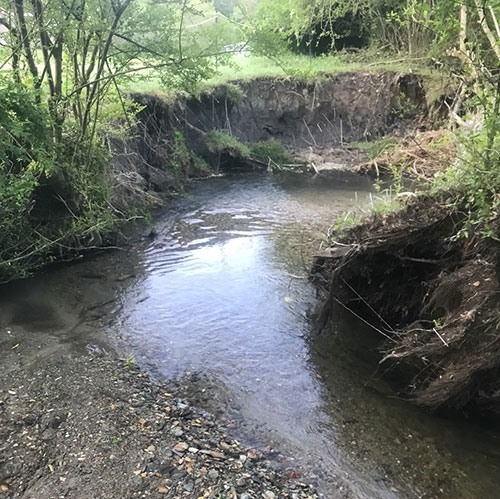The Water Log: What do trees have to do with clean water?
December 18th, 2020
By Megan Chase
The Water Log is Upstate Forever's periodic email newsletter dedicated to Clean Water issues and advocacy. Below is an archived copy of the newsletter. To sign up to receive The Water Log in your email inbox, please click here.
Greetings and welcome to the latest edition of the Water Log, Upstate Forever's email newsletter dedicated to clean water issues and advocacy.
Access to clean, reliable water is a fundamental right for all, though some communities bear the brunt of inadequate water protections. In the coming year, we will continue to look for ways to strengthen these protections and identify opportunities to update the local and statewide policies that affect watershed health so that they reflect the needs of a changing climate and land use ethic. Standing with local communities and statewide partners, we advocate for the development and implementation of effective water resource plans and policies to ensure water resources can be enjoyed by all.
Updates to the City of Greenville's Tree Ordinance
What do trees have to do with clean water?
When it comes to watershed level protection, we generally know that the more forest and vegetation cover a watershed has, the cleaner its water resources will be. Thinking of forests as a giant filtration system, for every $1 spent on land protection, $27 is saved in drinking water treatment costs.
What does that mean for cities and built environments that already have significant networks of grey infrastructure? Throughout the process of updating the City of Greenville's Tree Ordinance, Upstate Forever and others have discussed the benefits trees have on slowing stormwater flow, flood retention, and streambank stabilization – all things that help reduce stress on existing grey stormwater management systems that are often overwhelmed by runoff. Strategic planting and maintenance of trees is a cost-effective way to improve their function and reduce runoff.
By the numbers
In August, we talked about how Greenville County had already experienced two 10-year floods in 2020 alone, and had nearly reached its 50.1-inch average annual rainfall. A recent analysis from the Green Infrastructure Center showed Greenville’s trees were able to divert 55.9 million gallons of that rainfall from becoming stormwater runoff. Considering that our area has experienced increases in flooding from runoff and higher than average rainfall, we should all do our part to protect and promote tree growth to help mitigate these impacts.
You can find more details about the proposed ordinance here.
Act now to influence the draft tree ordinance
Yesterday, the City of Greenville’s Planning Commission held a virtual meeting to discuss the draft tree ordinance and hear from the public. They voted to recommend the ordinance to City Council, but attached a condition that would weaken the ordinance by exempting minor subdivisions of certain residential properties.
The ordinance will now go to City Council for first reading on Monday, January 11, and second reading Monday, January 25.
Find your representatives on City Council here and urge them to support the draft ordinance without the recent condition that would allow certain residents to opt out of heritage tree preservation.
To ensure the tree ordinance promotes a robust and equitable tree preservation framework, please encourage your council representative to ask that a portion of the fee-in-lieu tree fund is used to mitigate undue burden for affordable housing residents and providers.
Report Failing Streambanks in the Reedy River Watershed
 Friends of the Reedy River (FoRR) is developing a useful resource to identify areas with failing streambanks. This GIS-based tool will help FoRR track how much and where our streams are being damaged by erosion, development, imperviousness, and large storms, and identify strategies to address sources of sediment and contaminant runoff, especially on private property.
Friends of the Reedy River (FoRR) is developing a useful resource to identify areas with failing streambanks. This GIS-based tool will help FoRR track how much and where our streams are being damaged by erosion, development, imperviousness, and large storms, and identify strategies to address sources of sediment and contaminant runoff, especially on private property.
Help FoRR be the eyes for the river. Report a failing streambank here!
Photo: Clemson Extension

